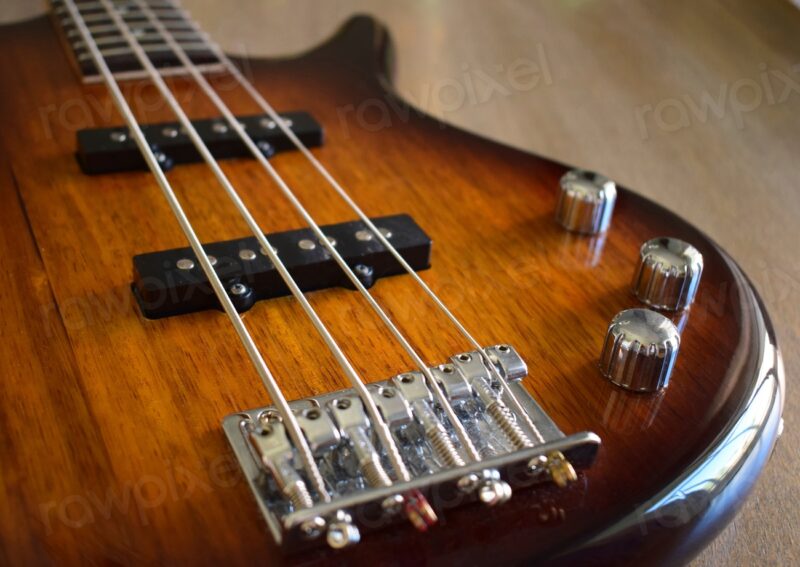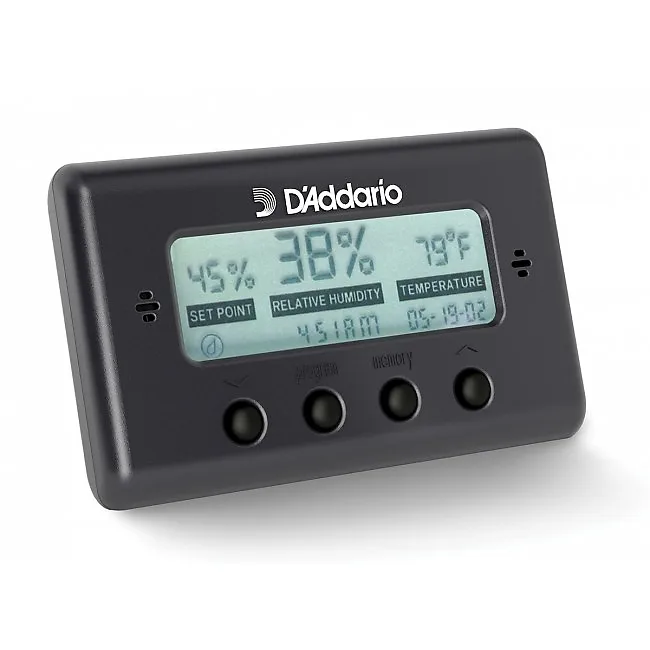Mastering the Art of Tuning Bass Guitar Strings: A Comprehensive Guide
If you’re a bass guitarist, you already know the importance of having perfectly tuned strings. A well-tuned bass enhances your instrument’s overall sound and clarity and creates a more enjoyable playing experience. But how do you master the art of tuning your bass guitar strings? Look no further! This comprehensive guide will take you through the step-by-step process of adjusting your bass guitar strings like a pro.
Whether you’re a beginner or an experienced player, you’ll find valuable tips and tricks to help you achieve the perfect pitch. We’ll cover various tuning methods, including standard tuning, drop-D tuning, and alternative tunings, as well as the tools and techniques you’ll need for the job.
From understanding the anatomy of your strings to troubleshooting common tuning issues, this guide has got you covered. Get ready to fine-tune your skills and unlock the full potential of your bass guitar!
Table of Contents
Why is tuning important for bass guitar?
Tuning is an essential aspect of playing the bass guitar. It ensures that each string produces the correct pitch and allows you to play harmoniously with other musicians. Properly tuned strings also prevent your bass guitar from sounding out of tune and create a more pleasing and professional sound. Whether practicing alone or in front of an audience, having well-tuned strings is crucial for achieving the best sound quality.
Understanding the standard tuning for bass guitar
The standard tuning for a 4-string bass guitar is E-A-D-G, from the thickest string to the thinnest. The thickest string, also known as the low E string, produces the lowest pitch, while the thinnest string, the G string, produces the highest pitch. This tuning allows for a wide range of notes and provides a solid foundation for playing a variety of musical genres, from rock to jazz to funk. Understanding the standard tuning is the first step towards mastering tuning your bass guitar strings.
Different methods of tuning bass guitar strings
While the standard tuning is the most common, there are various other tunings you can experiment with to achieve different sounds and styles. One popular alternative tuning is drop-D tuning, where the low E string is tuned down to a D. This tuning is commonly used in rock and metal music and gives your bass guitar a heavier and darker tone. Additionally, there are open tunings, where the strings are tuned to form a chord when played open. Open tunings are commonly used in slide guitar playing but can also be applied to the bass guitar for unique and creative sounds.
Step-by-step guide to tuning bass guitar strings
Now that you understand the importance of tuning and the different methods let’s dive into the step-by-step process of tuning your bass guitar strings. First, ensure you have a reliable tuner on your smartphone, whether a physical tuner or a tuner app.
Start by tuning the low E string to the correct pitch, using the tuner as a reference. Once the low E string is tuned, you can tune the remaining strings, following the same process. Remember to tune each string individually and adjust the tuning pegs slowly and accurately. Once all the strings are in tune, play a few chords or scales to double-check the overall sound of your bass guitar.
Tips for maintaining proper tuning on bass guitar
Even after you’ve tuned your bass guitar strings to perfection, it’s essential to maintain proper tuning throughout your playing session. Changes in temperature, humidity, and even the tension created by your playing can cause the strings to go out of tune. To minimize these tuning issues, consider using string lubricant or graphite on the nut and saddle to reduce friction. Additionally, stretch your strings before playing by gently pulling and releasing them, as this helps to settle the strings and stabilize their pitch. Regularly check the tuning of your bass guitar and make adjustments as needed to ensure consistent and accurate pitch.
Common tuning problems and how to fix them
You may encounter common tuning problems while playing the bass guitar despite your best efforts. One common issue is the strings slipping out of tune, especially if you’re using new strings or bending the strings aggressively. To fix this problem, stretch the strings before playing and re-tune them if necessary. Another issue is intonation, which refers to pitch accuracy at different positions on the fretboard. If your bass guitar sounds out of tune when playing higher up the neck, you may need to adjust the intonation using the bridge saddles. By identifying and troubleshooting these common tuning problems, you can ensure that your bass guitar always sounds its best.
Exploring alternate tunings for bass guitar
In addition to the standard and drop-D tunings, you can explore countless alternate tunings to expand your sonic palette. Some popular alternate tunings for bass guitar include drop-C, where all strings are tuned down a whole step from the standard tuning, and C-G-C-F, known as “C standard” tuning, commonly used in heavy metal music. These alternate tunings can inspire new musical ideas and help you create unique sounds that set you apart from other bass players. Don’t be afraid to experiment and find the tunings that resonate with your musical style.

Recommended tools and accessories for tuning bass guitar strings
Having the right tools and accessories at your disposal is essential to ensure accurate tuning. Whether a dedicated tuner or a tuner app on your smartphone, a reliable tuner is a must-have. If you prefer a physical tuner, consider investing in a chromatic tuner that can handle different tuning systems.
Additionally, having a good set of strings is crucial for achieving optimal sound and tuning stability. Regarding accessories, a string winder can make restring and tuning your bass guitar quicker and more convenient. Finally, consider using a capo to experiment with different keys or play songs that require a higher pitch.
Different methods of tuning bass guitar strings
While standard tuning is the most common method for tuning bass guitar strings, you can explore other tuning options to achieve different sounds and play unique styles of music. Let’s take a look at some of the popular alternate tunings for bass guitar:
1. Drop-D tuning: In drop-D tuning, the lowest string (E string) is tuned down one step to a D. This tuning is often used in rock, metal, and punk genres to create a heavier and deeper sound. To tune to drop-D, follow the same steps as standard tuning, but tune the thickest string down to a D instead of an E.
2. Half-step down tuning: In this tuning, all the strings are tuned down a half-step. The standard E-A-D-G tuning becomes Eb-Ab-Db-Gb. This tuning is commonly used in blues, jazz, and funk music to achieve a slightly lower and warmer tone.
3. Open tunings: Open tunings involve tuning the strings to form a specific chord when played open (without pressing down any frets). Open tunings can be used to create unique chord voicings and harmonics. Some popular open tunings for bass guitar include Open G (D-G-D-G), Open D (D-A-D-F#), and Open A (E-A-E-A).
Experimenting with different tunings can open new creative possibilities and expand your musical repertoire. However, it’s important to note that changing the tuning of your bass guitar may require adjusting the string tension, intonation, and setup of your instrument. It’s always a good idea to consult with a professional guitar technician if you’re unsure about making these adjustments.
Tips for maintaining proper tuning on bass guitar
Keeping your bass guitar in tune is crucial for optimal sound quality and playability. Here are some tips to help you maintain proper tuning:
1. Stretch your strings: New strings tend to stretch and settle into their tuning over time. To expedite this process, gently pull and stretch each string after installing them. This will help stabilize the tuning and prevent excessive stretching during play.
2. Use string lubricant: Applying a small amount of string lubricant to the contact points of the strings (where they pass through the nut and bridge) can reduce friction and help the strings return to their original tuning more effectively.
3. Check your intonation: Intonation refers to pitch accuracy at different points along the neck. If your bass guitar is intonated correctly, the open string notes should be in tune with the notes played at the 12th fret. You may need to adjust the string length at the bridge or saddle if you notice any discrepancies.
4. Store your bass guitar properly: Extreme temperature and humidity changes can affect the tuning stability of your instrument. Store your bass guitar in a cool, dry place, away from direct sunlight and away from sources of heat or moisture.
By following these tips, you can ensure that your bass guitar stays in tune for extended periods, allowing you to focus on playing and enjoying your music.
Common tuning problems and how to fix them
Even with the best intentions and maintenance practices, tuning problems can still arise. Here are some common tuning issues you might encounter and how to fix them:
1. String slippage: If your strings are slipping out of tune quickly, check if they are adequately wound around the tuning pegs. Make sure the strings are securely fastened and wound tightly around the pegs. If necessary, restring the affected strings.
2. Nut and bridge issues: If the strings are binding in the nut slots or at the bridge, they may not return to their proper tuning after playing. Lubricating the nut slots with a graphite-based lubricant can reduce friction and help the strings glide smoothly. Similarly, ensuring the strings are seated correctly in the bridge can prevent tuning instability.
3. Fretting too hard: Pressing down on the strings with excessive force can cause the pitch to go sharp. Practice applying enough pressure to produce a clear note without bending the pitch. This technique, known as “light touch,” can significantly reduce tuning issues caused by heavy-handed fretting.
4. Environmental factors: Changes in temperature and humidity can cause the wood of your bass guitar to expand or contract, leading to tuning problems. Use a hygrometer to monitor the humidity levels of your practice space, and invest in a humidifier or dehumidifier if necessary. Keeping your bass guitar in a stable environment will help minimize tuning issues caused by environmental factors.
You can maintain consistent and accurate tuning on your bass guitar by addressing these common tuning problems and implementing the necessary fixes.

Exploring alternate tunings for bass guitar
While standard tuning and alternate tunings like drop-D and half-step down are popular among bass guitarists, you can explore countless other tunings to create unique sounds and expand your musical horizons. Here are a few examples:
1. C-G-C-F: This tuning, known as “C tuning,” is often used in heavier genres like metal and progressive rock. It provides a lower and more aggressive tone, making it perfect for heavy riffs and power chords.
2. B-E-A-D: Commonly referred to as “B standard tuning,” this tuning is popular among bassists who want to achieve a more profound and heavier sound. It’s often used in extreme metal and doom metal genres.
3. C-G-C-F-A-D: Known as “drop-C tuning,” this tuning is similar to drop-D tuning but with all the strings tuned down an additional whole step. It’s commonly used in metal and alternative rock genres to create a darker and more aggressive sound.
4. D-A-D-G: This tuning, also known as “D modal tuning,” is often used in folk and acoustic music. It provides a rich, open sound, allowing creative chord voicings and melodic playing.
These are just a few examples of the many alternate tunings available for bass guitar. Experimenting with different tunings can inspire new ideas and produce innovative musical compositions. However, keep in mind that changing the tuning of your bass guitar may require adjustments to string gauge, setup, and overall tension. Consult with a professional if you’re unsure about making these adjustments yourself.
Recommended tools and accessories for tuning bass guitar strings
You’ll need some essential tools and accessories to tune your bass guitar strings successfully. Here are some recommendations:
1. An electronic tuner provides accurate and reliable tuning readings. Look for a tuner with a clear display and easy-to-use interface. Clip-on tuners are particularly convenient as they can be attached directly to the headstock of your bass guitar.
2. Tuning app: Numerous tuning apps offer accurate tuning readings if you prefer using your smartphone. Some popular options include GuitarTuna, Fender Tune, and Pro Guitar Tuner.
3. String winder: A string winder is a handy tool that speeds up changing strings and adjusting tuning pegs. It makes winding and unwinding strings quick and effortless.
4. Graphite-based lubricant: As mentioned earlier, applying a small amount of graphite-based lubricant to the contact points of your strings can reduce friction and improve tuning stability.
5. Hygrometer: A hygrometer measures the humidity levels in your practice space. Maintaining stable humidity for your bass guitar is crucial to prevent warping, tuning instability, and other issues caused by excessive moisture or dryness.
Investing in these tools and accessories will make the tuning process easier and more efficient, allowing you to spend more time playing and less time worrying about tuning.
Conclusion: Becoming a master of tuning bass guitar strings
Tuning your bass guitar strings is a fundamental skill every bassist should master. Whether you’re a beginner or an experienced player, understanding the importance of proper tuning and learning various methods and techniques will greatly enhance your playing experience and the overall sound of your instrument.
From standard tuning to exploring alternate tunings, this comprehensive guide has provided you with the knowledge and tools to become a master of tuning bass guitar strings. Remember to tune your bass guitar regularly, maintain proper string tension, and address any tuning issues promptly.
With practice and patience, you’ll develop a keen ear for tuning and unlock the full potential of your bass guitar. Get ready to rock the stage with perfectly tuned strings and make your music truly shine!



